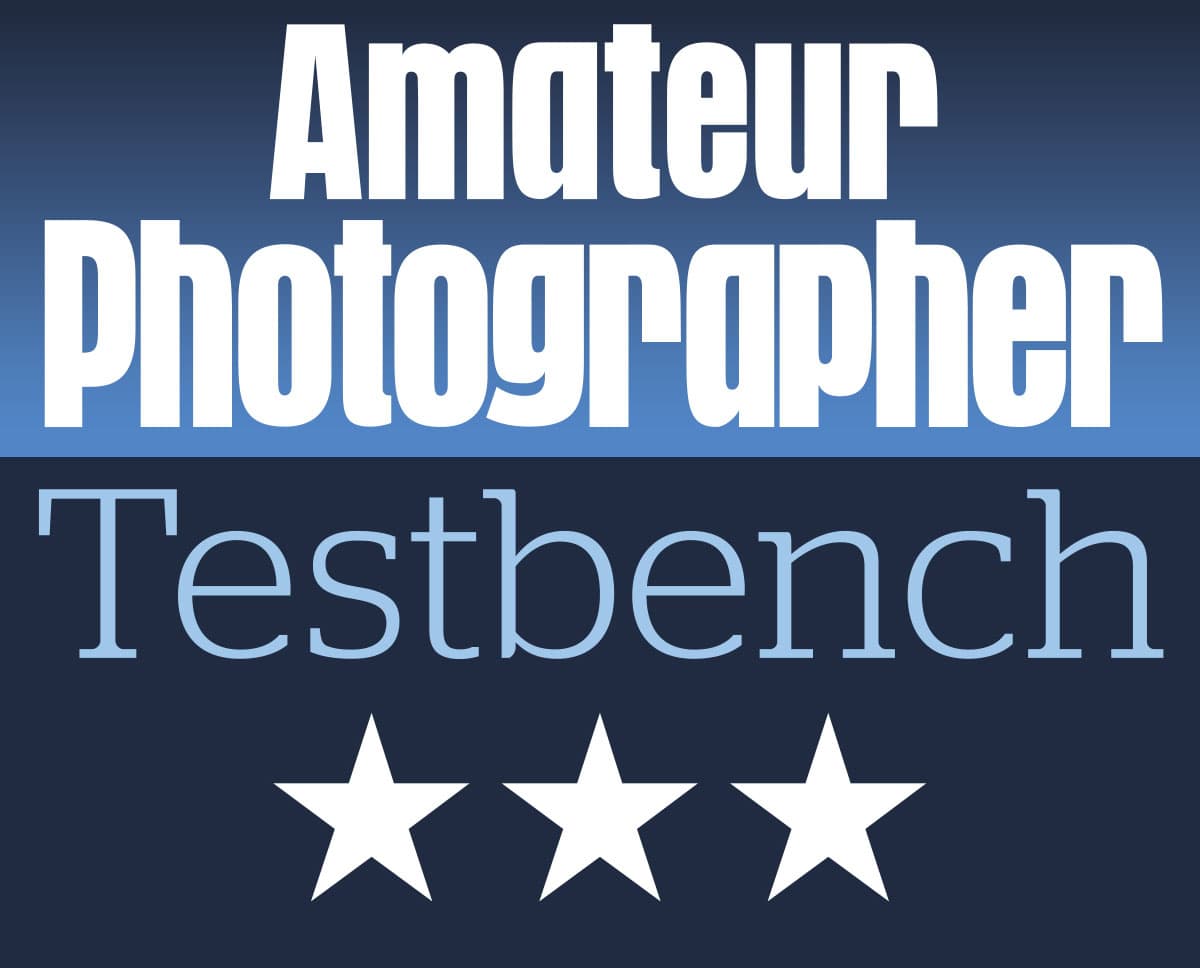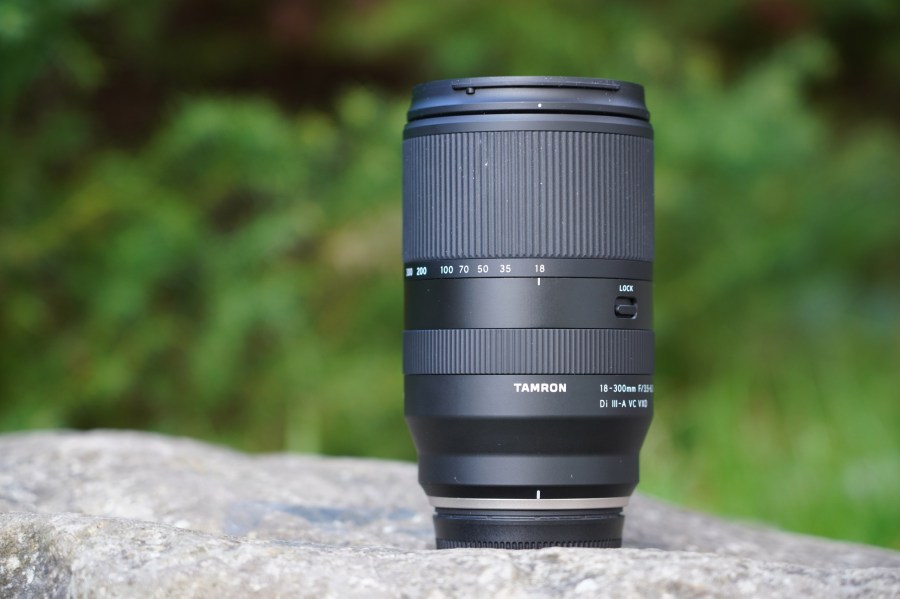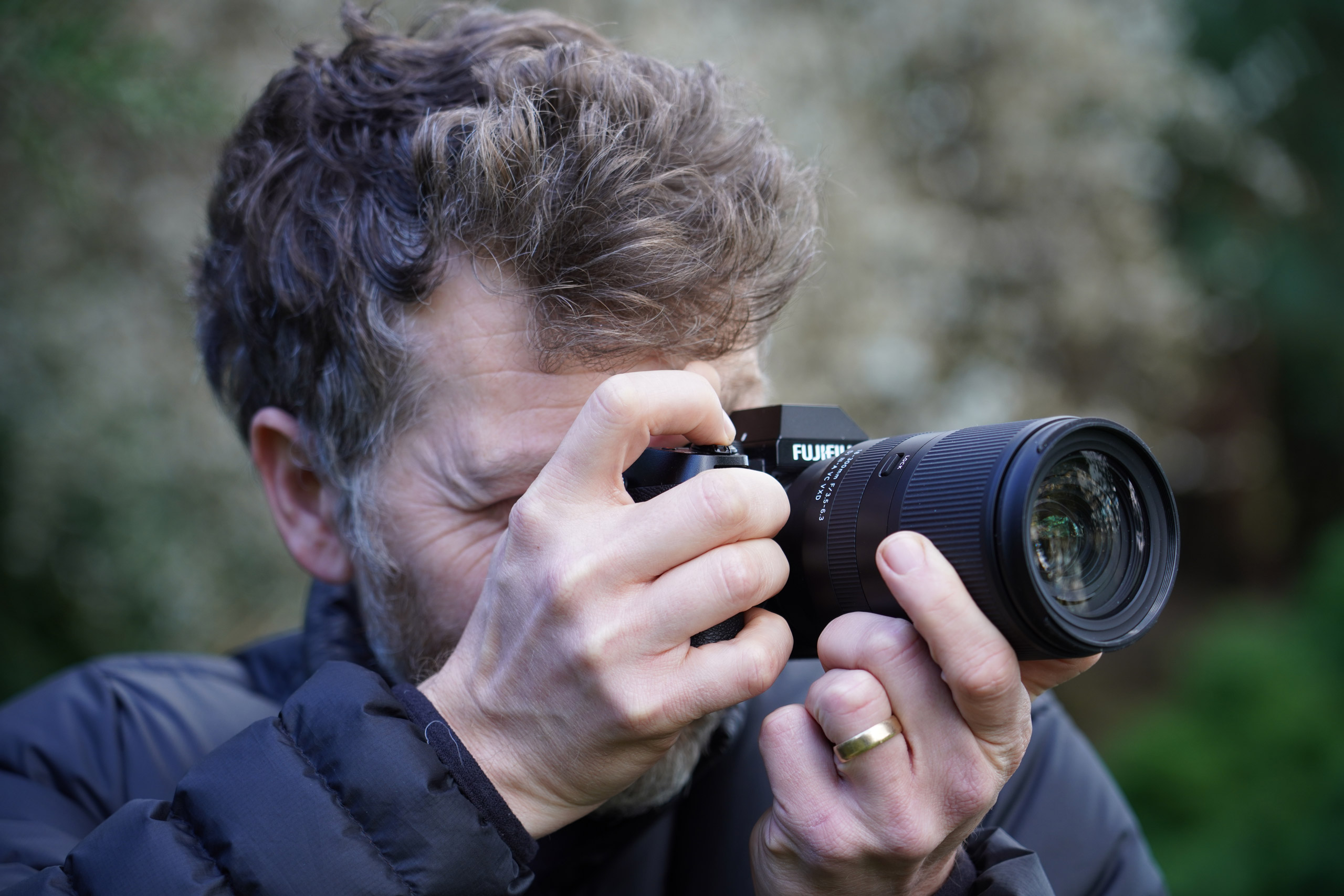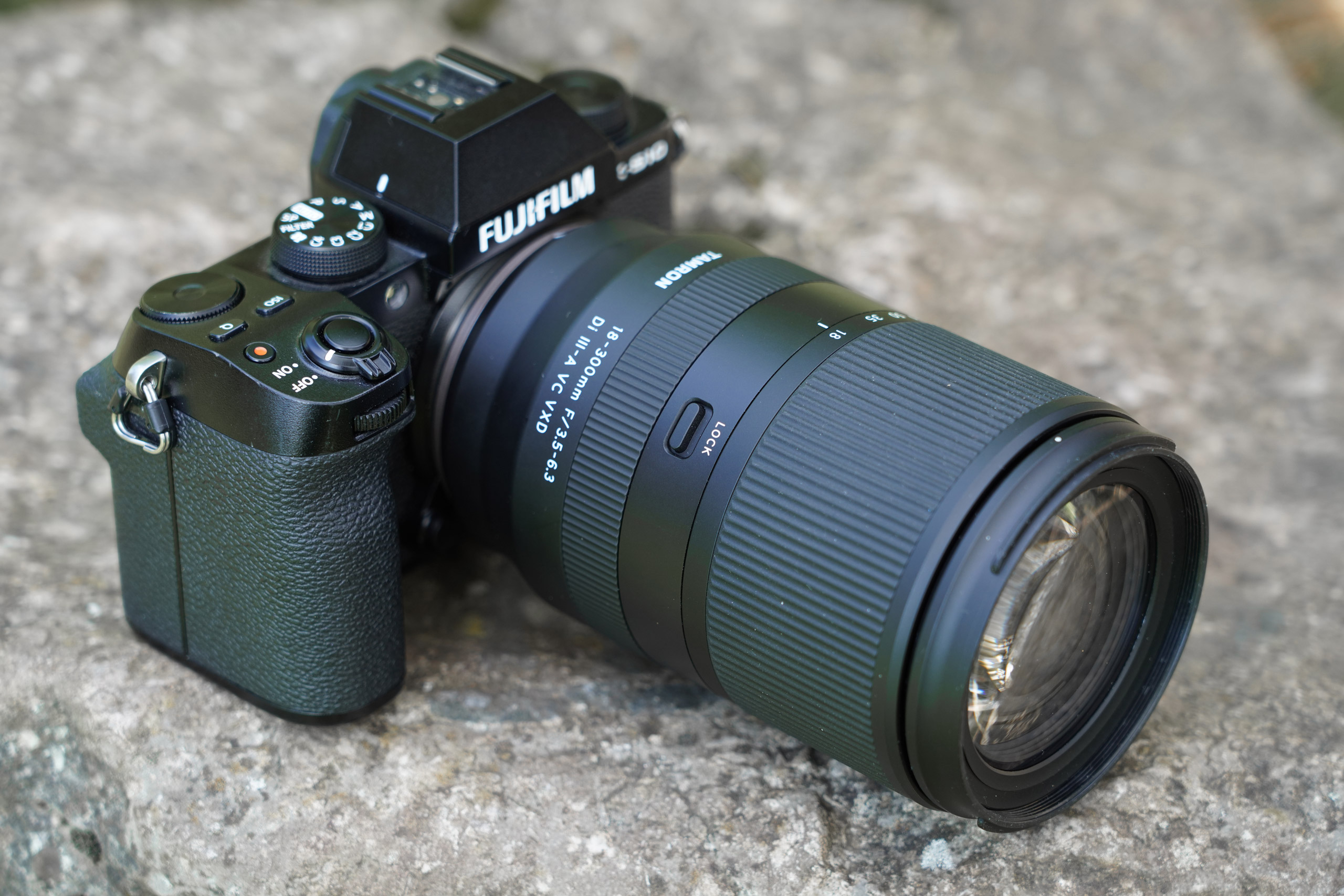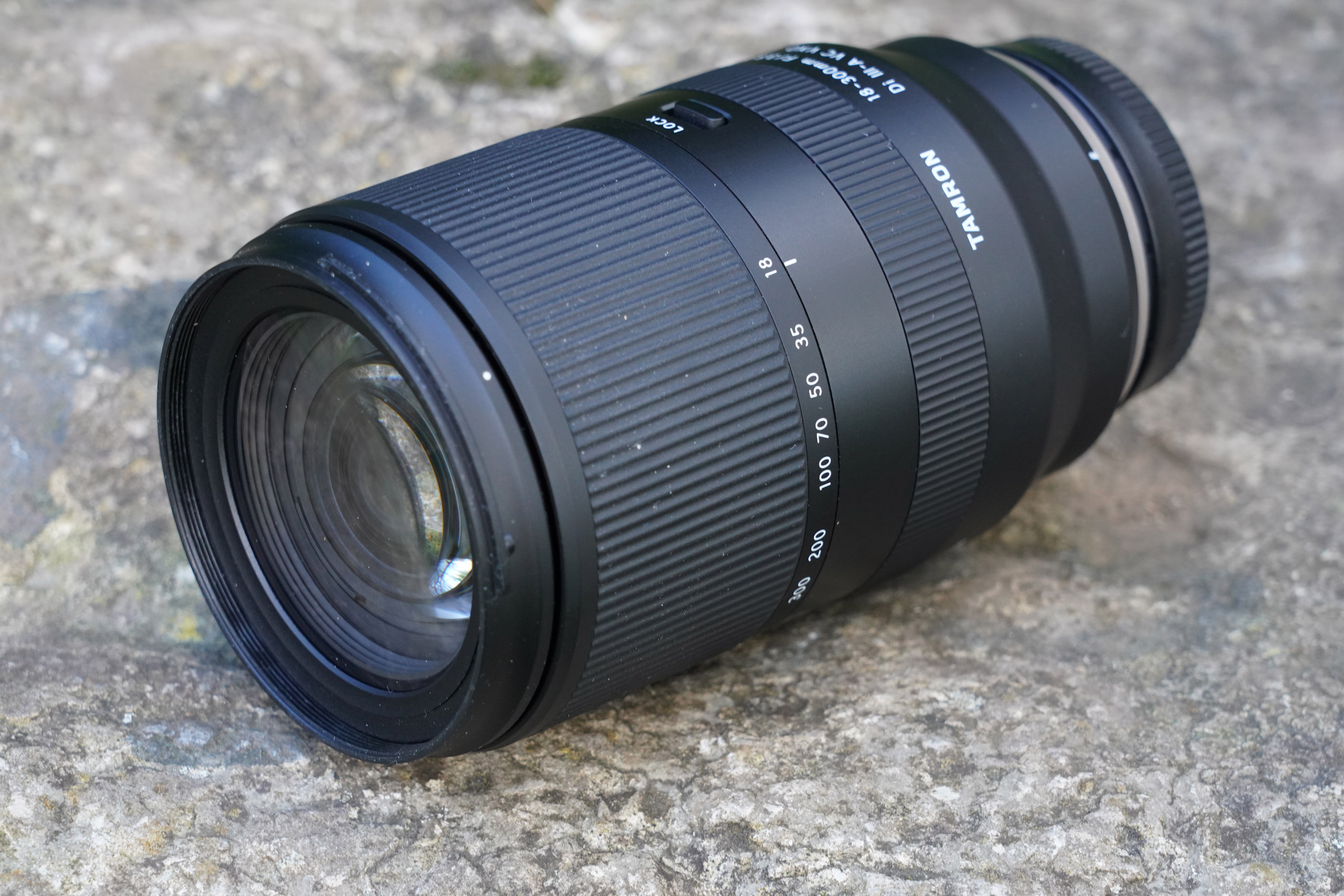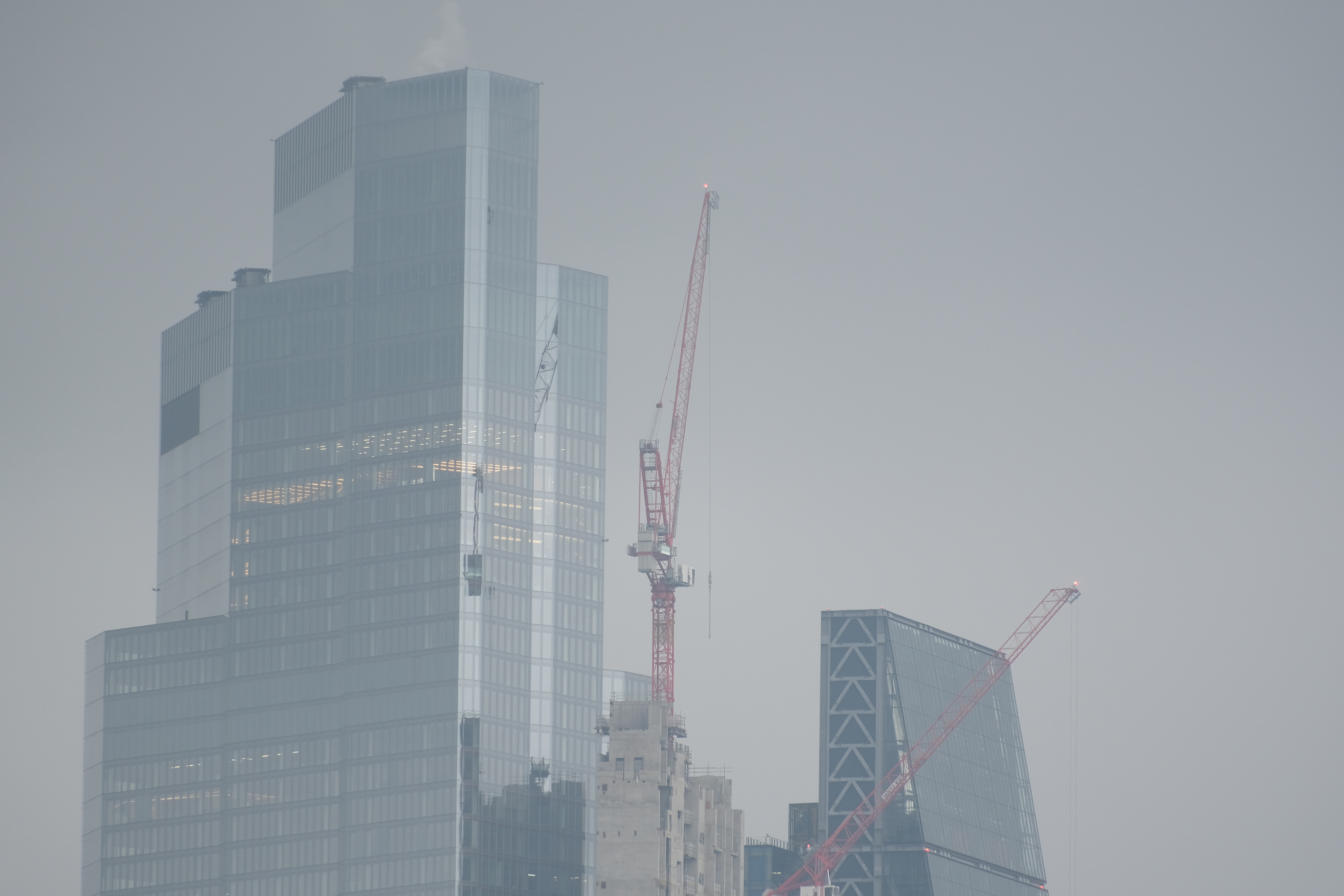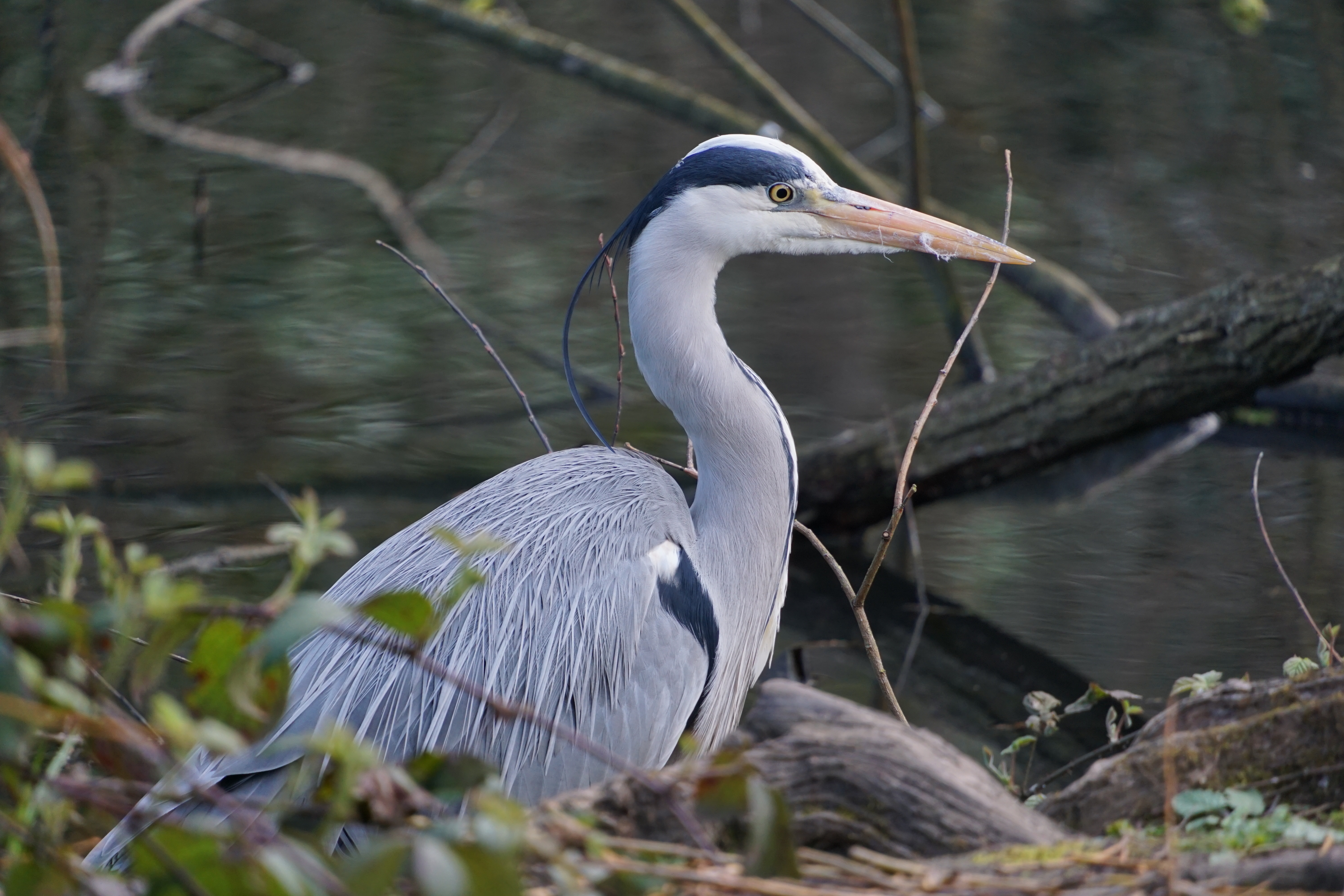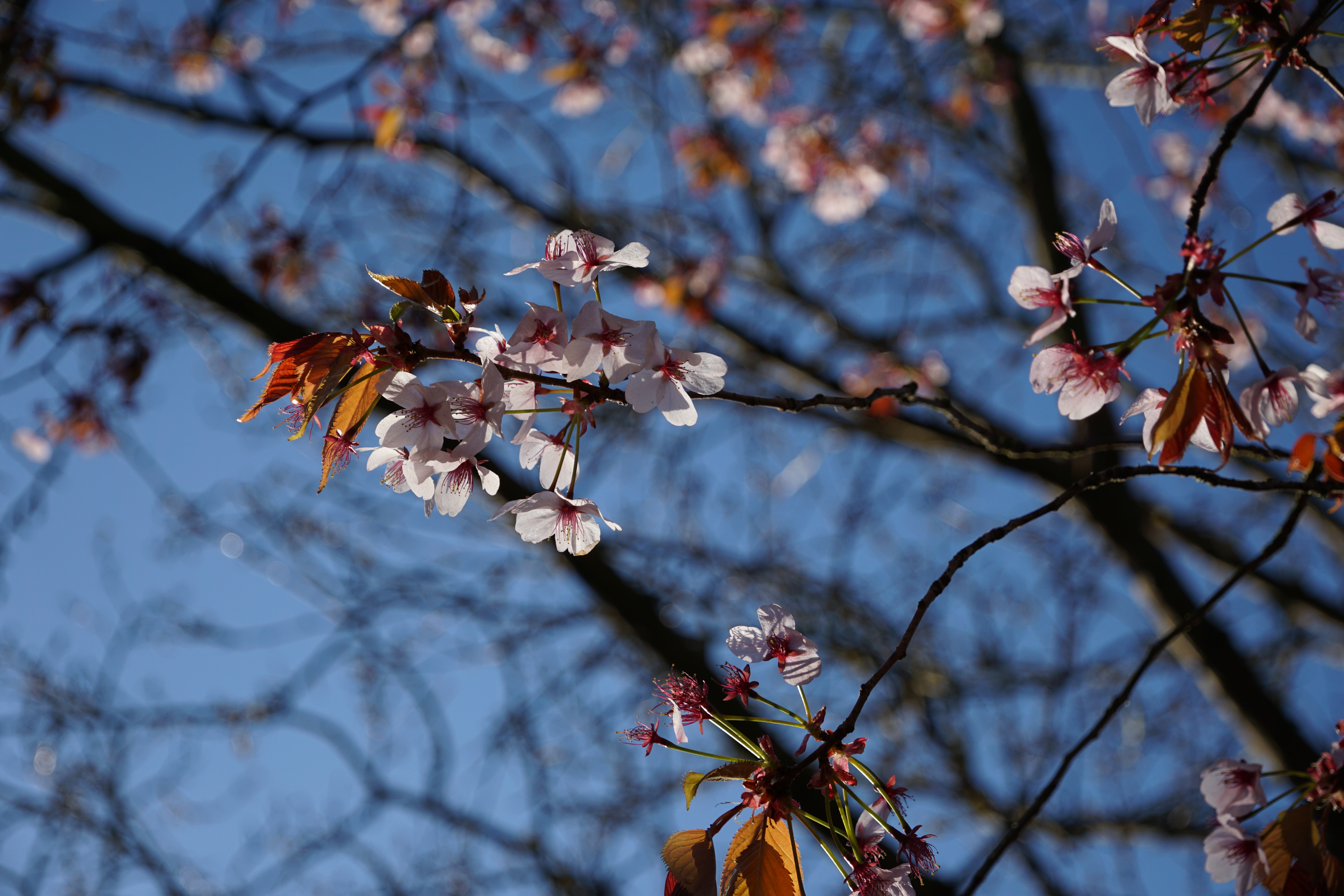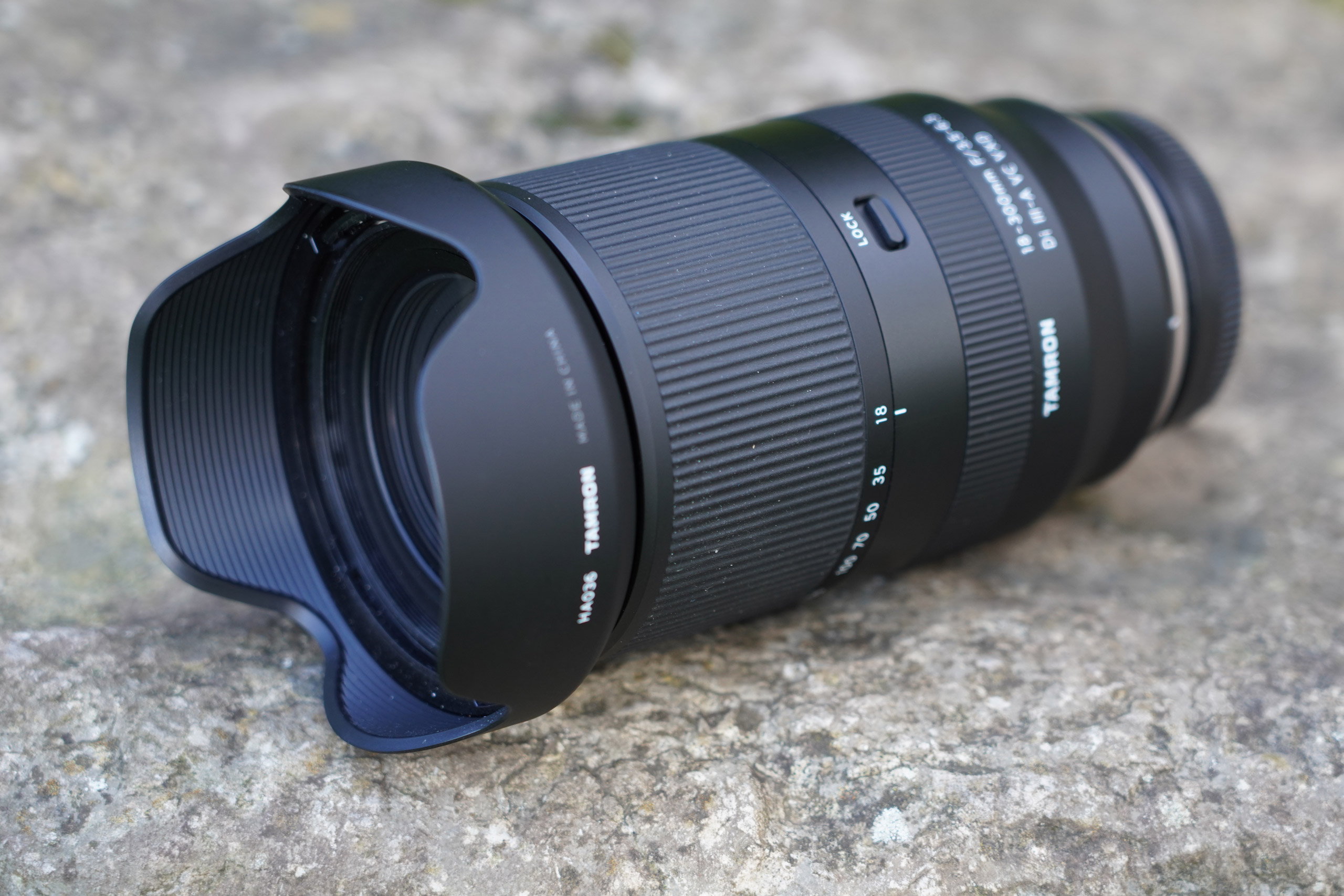Photography can be a constant battle of convenience versus perfection and the inherent cost associated with the two. Travel zoom lenses, such as the Tamron 18-300mm F/3.5-6.3 Di III-A VC VXD, are the perfect example of this. We all know there will be compromises in image quality when using a lens with a 16.6x range. Still, some photographers can forgive those imperfections for the considerable saving in size, weight and cost. At just £679, the Tamron 18-300mm lens can be used for everything from landscapes to wildlife shots. It even has a 1:2 magnification ratio for shooting close-up images; it could be the ideal lens for travelling or those just starting.
Tamron 18-300mm F/3.5-6.3 Di III-A VC VXD Features
As the 18mm shortest focal length may have hinted at, the Tamron 18-300mm lens is designed for use on Fujifilm and Sony cameras with an APS-C size sensor or full-frame Sony cameras with the equivalent crop mode. That means the lens has the equivalent field of view as a 27-450mm lens. Essentially it will transform X-Mount or E Mount cameras into a bridge camera.
A lot is going on inside the lens barrel, with a notable 19 elements in 15 groups bending light to achieve the impressive focal range. Keeping the lens stable when using the maximum 450mm equivalent focal length is Tamron’s Vibration Control (VC), which for many years, in my opinion, was about the best optical stabilisation system of any manufacturer.
The other designation on the lens is VXD – which denotes that it uses Tamron’s VXD linear motor system. Such motors drive focusing lens elements quickly back and forth to focus. As technology improves, these motors are found in more and more lenses. They provide faster and quieter autofocus than the more traditional geared motor systems usually found in more affordable lenses.
Tamron doesn’t bring any new features to the party, and with it facing virtually no competition, neither does it need to. Fujifilm doesn’t have an 18-200mm or greater lens in its line-up. Sony has three such lenses – the E 18–200mm F3.5–6.3 OSS, the LE E 18–200mm F3.5–6.3 OSS, which is smaller and lighter, and the E PZ 18–200mm F3.5–6.3 OSS which adds a Power Zoom control, making it useful for video. Tamron itself has an 18-200mm F/3.5-6.3 Di III VC lens for Sony E and Canon EF-M mounts. So the 18-300mm focal length truly stands out as having no real competition in either mount fitting.
The modest f/3.5-6.3 maximum aperture setting gives the lens an extremely travel-friendly size of 125.6mm long with a weight of 620g. The length approximately doubles when the zoom is fully extended, although this has no bearing on the lens being a perfect size and weight to leave on a camera and throw in a bag.
Tamron 18-300mm F/3.5-6.3 Di III-A VC VXD Build and Handling
Externally the lens is straightforward. A wide ribbed zoom ring sits toward the front of the lens barrel, with a narrow focus ring closer to the camera. The lens barrel has a smooth finish, but you will rarely touch this surface given how much real estate the two rings take up. The lens extends as it is zoomed, doubling in length when reaching the 300mm focal length. A lock switch prevents the lens from extending when not in use.
The zoom mechanism is nice and smooth, with no resistance points. Focusing is a fly-by-wire electronic system that I had no problems with, especially as the maximum aperture is not large enough to produce an incredibly shallow depth of field.
Whilst Tamron makes no claims as to the weather sealing of the lens, it is worth noting that there is a thin rubber gasket around the rear of the lens to help prevent dust and moisture ingress.
Once again, this design is all about the convenience of having a single lens that you can use for virtually every type of photography at a price to suit entry-level photographers or those who want to travel extremely light. In that regard, it is an overwhelming success.
Autofocus
For my review, I tried both the X mount and E Mount versions of the lens. However the X Mount version was pre-production and seemed to have a few quirks that I didn’t find with the final E mount version.

Close-up performance is impressive – Tamron 18-300mm with Sony A6000, 1/60s, f/8, ISO100, 42mm (63mm equivalent), Photo: Richard Sibley
The lenses were paired with a Fujifilm X-S10 and the Sony A6000, and I found Single spot AF performance acceptable. It was fast enough when shooting at 18mm, though it doesn’t have the snap of proprietary lenses. At 300mm, there was more of a noticeable drop in speed, and there was the occasional time when the lens failed to find focus with the first press of the shutter button. It happened more often with the X Mount version of the lens, but I won’t read too much into this as, again, I was working with a pre-production.
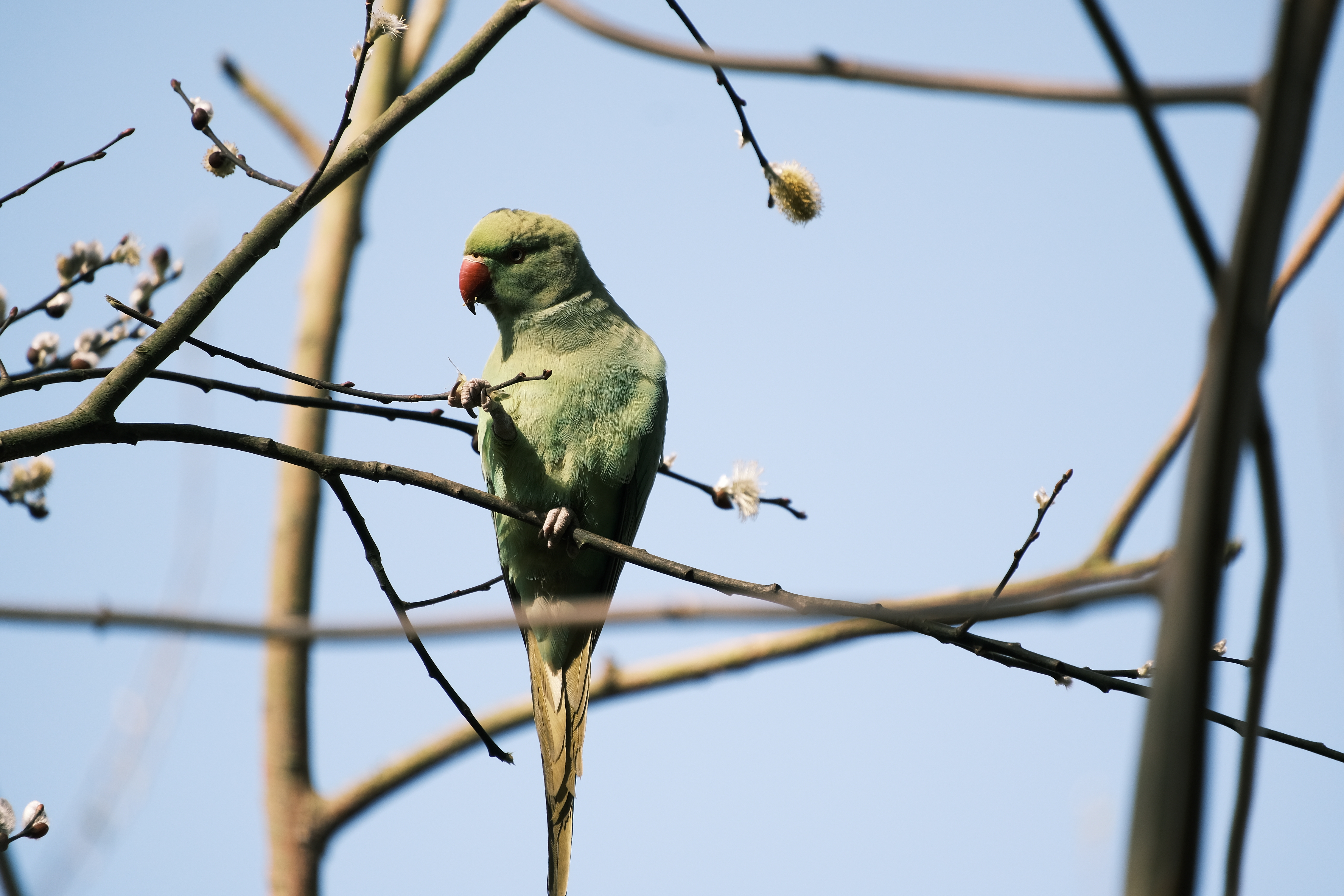
Shot with the Fujifilm X-S10 at full-zoom, 1/420s, f/6.3, ISO400, 300mm, 450mm equivalent, Photo: Richard Sibley
I didn’t do much with the lens in continuous AF mode, but my conclusion is that if you want to shoot fast-moving wildlife, such as birds in flight, you will need a lot of skill and luck on your side. Continuous AF is more equipped to keep up with moderately moving subjects at the shortest focal lengths.
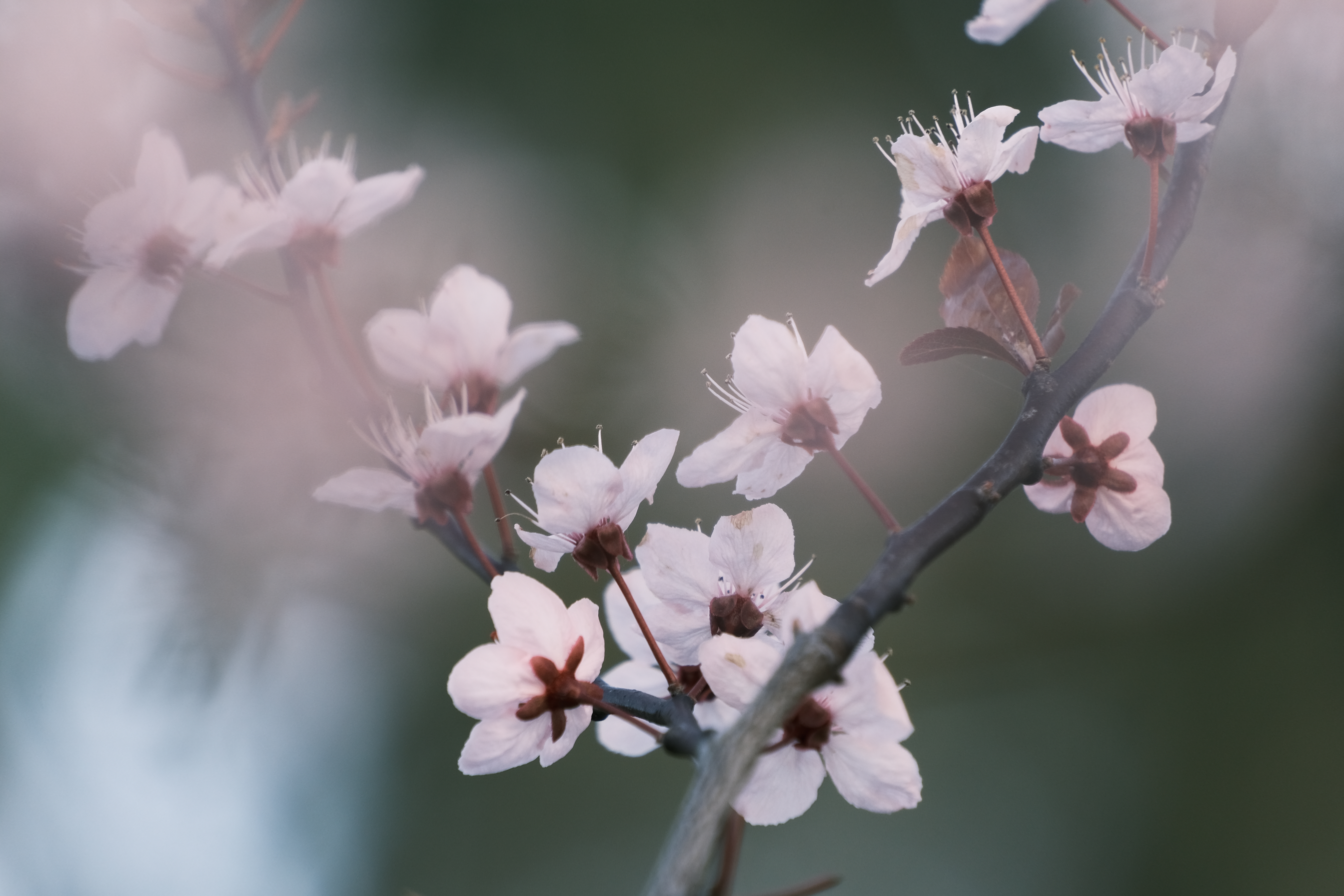
Blossom with the Fujifilm X-S10, 1/200s, f/6.3, ISO400, 300mm, 450mm equivalent, Photo: Richard Sibley
Tamron 18-300mm F/3.5-6.3 Di III-A VC VXD Image Quality
This lens isn’t for you if you’re after critical sharpness, but you probably already know that. You can see details with the lens, but everything benefits from adding some sharpness and local detail contrast when editing the raw images; it helps add a bit of artificial crispness, which isn’t naturally there.
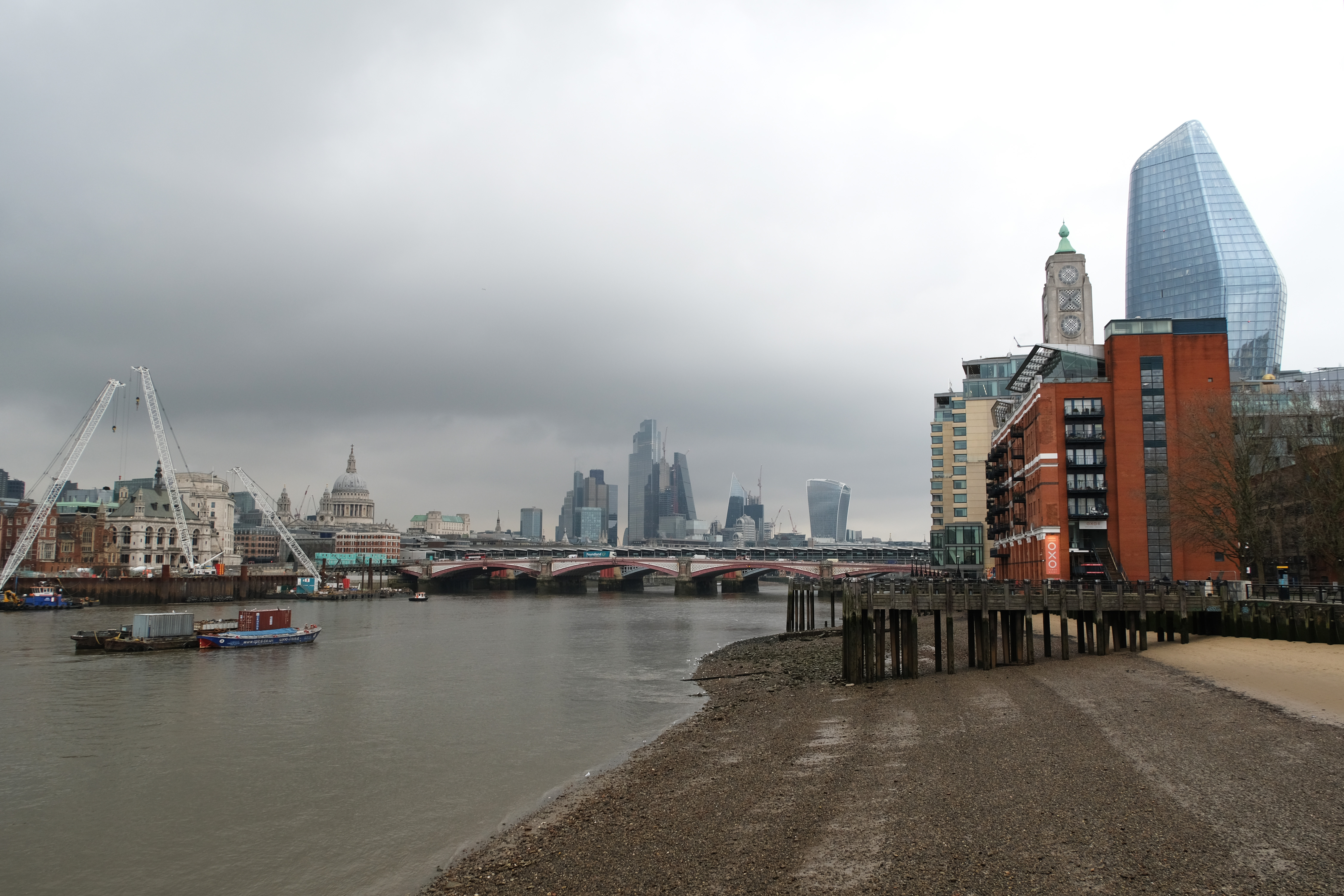
At the widest setting, with X-S10, 1/200s, f/5.6, ISO400, 18mm, 27mm equivalent, Photo: Richard Sibley
That said, in the centre, the lens produces fair results. If you go about a third of the way from the centre to the edge, the sharpness drops off, getting progressively softer into the corners. All things considered, when shooting landscapes at the shortest focal lengths, the image resolution in the corners isn’t as bad as one might expect for a lens with a 16.6x zoom ratio. The sharpness fall-off tells a similar story at the telephoto focal lengths.
There are no real surprises regarding the sharpness at different apertures. The lens is at its sharpest between f/5.6-f/11 depending on the focal length. There is a noticeable improvement stopping the lens down 1EV or 2EV from the largest aperture. However, with the lens at its minimum focal length, shooting wide-open is better than I expected, although you will most likely be shooting landscapes at the focal length, so you will want to stop down to increase the depth of field anyway.
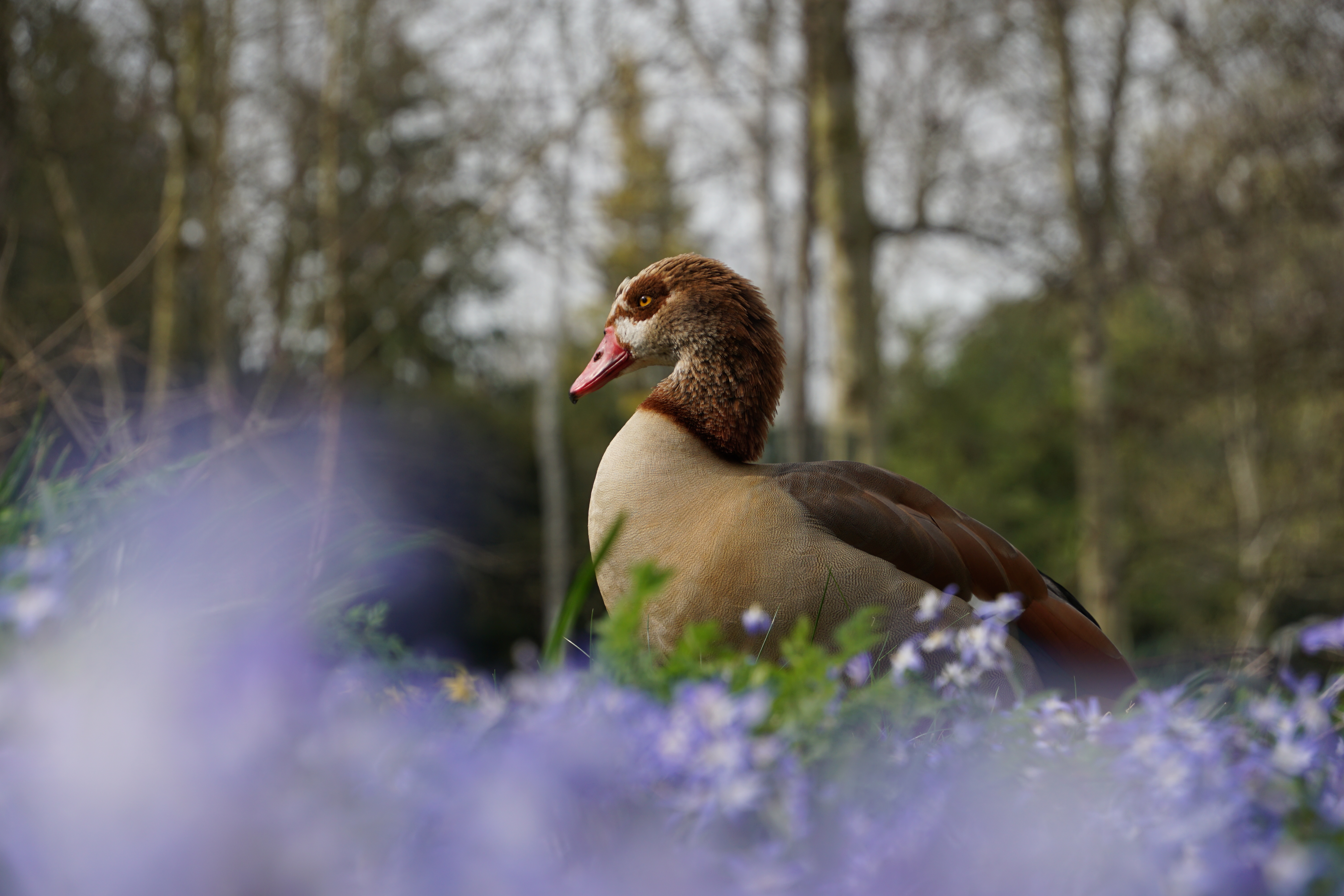
Shot at 135mm with the Sony A6000, 1/160s, f/8, ISO100, 135mm, 202mm equivalent, Photo: Richard Sibley
If you want the best results, you have to be careful to avoid diffraction. I would completely rule out shooting at the two smallest apertures, so f/16-22 at 18mm and f/32-/f40 at 300mm. I also took a series of shots around 150mm and found that the same old rule applies – stop the lens down around 2EV from the smallest aperture for best results.
Using the Sony A6000 with Lens Compensation set to Auto, there is very noticeable barrel distortion at the 18mm focal length. This distortion is gone by around the 35mm focal length, where everything looks reasonably straight. From this point, pincushion distortion creeps in and gets progressively worse. Still, impressively, it won’t be noticeable unless you are shooting brick walls, and I would offer praise for being very well controlled.
Both the Sony and Fujifilm camera’s images showed chromatic aberration on high contrast edges, mainly when shooting at shorter focal lengths. These aberrations are strongest in the corners where red/cyan aberration was noticeable and some quite strong magenta fringing in some scenarios. Editing a raw image from the Sony A6000, I had to manually correct the magenta fringing with it, requiring a setting of 10/20 to reduce it significantly. Even with the slider at its 20/20 maximum, it was still subtly visible. It won’t affect every image, but it is worth noting if you happen to be shooting up through tree branches.

Landscape scene taken with the Sony A6000, 1/800s, f/8, ISO100, 37mm, 55mm equivalent, Photo: Richard Sibley
There is less fringing and aberration at the telephoto end, but purple fringing in particular did still seem to be present on some high contrast highlight edges.
The 18-300mm is one of those lenses that will get the majority of its use at the very extremes of its focal range. But there is a catch when using it at the 300mm end. The 450mm equivalent focal length pushes the optical stabilisation to its limit, and you need to keep your eye on the shutter speed, especially if using it on a camera without a stabilised sensor. I’d suggest 1/400th sec. However, with a maximum aperture of f/6.3, you will need to push the sensitivity up, which, even on a bright sunny day, may mean shooting at ISO 800. For those pixel peeping, you will start to see image noise and the softening of noise reduction around this sensitivity, which compounds the lens’s lack of critical detail resolution.
Tamron 18-300mm F/3.5-6.3 Di III-A VC VXD Verdict
Sometimes ‘good’ is good enough, and for many, that will be the case with the Tamron 18-300m f/3.5-6.3mm lens. Those who are more interested in capturing the moment than pixel peeping will get along fine with the lens, particularly if the images will only ever be viewed on a screen, whether it is a smartphone, tablet, monitor or television. It will also be acceptable for prints up to around A4.
In hand, the lens feels nice, with nothing particular to report, and it can’t be overstated just how convenient the lens is. It is a jack of all trades but master of none, but this is a compromise worth considering for many. With a bit of care when it comes to focusing and keeping the camera steady, it is possible to capture a decent amount of detail with the lens. For someone getting their first camera, perhaps moving up from a smartphone, the 18-300mm lens will be a great choice to allow them to explore many different types of photography. Similarly, if you are travelling and space is of a genuine premium, it is ideal. However, for everyone else, there will always be that nagging thought of what it would be possible to capture if you had lenses with a less impressive focal range but better image quality in your bag.
